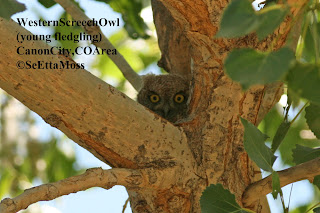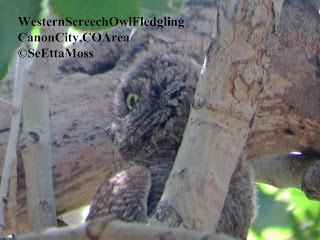CommonRavenFamily-On night ledge (after bobcat escorted away)
Very short video clip. After the parent ravens have escorted the adult bobcat away from their fledglings, one parent joins the 2 fledglings on the cliff ledge where they have been lured (with food) to spend the night. This is a pretty save ledge with only one apparent area that a predator could climb down--this is on the far left side and is where I have seen a parent perch for the night, apparently to guard the ledge. And as the guano indicates, this ledge has been used a lot. SeEtta


